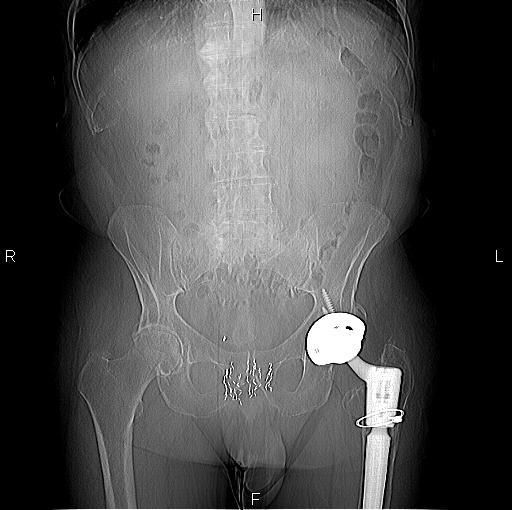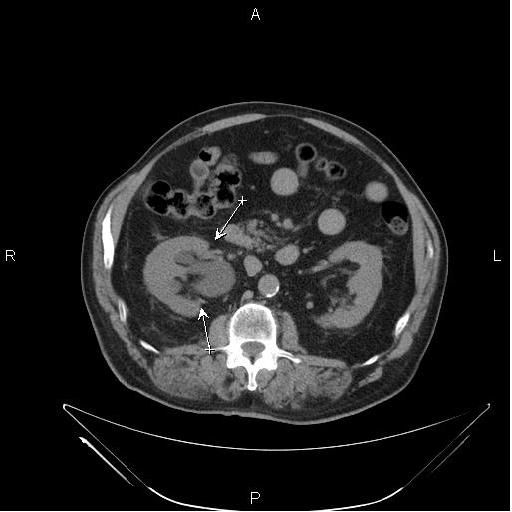An unusual cause for hydronephrosis
An 81-year-old man with a history of prostate cancer, treated with localized therapy via brachytherapy seeds, presented with right-side flank pain. There was no hematuria and the patient did not have a fever or elevated white count.
CLINICAL HISTORY
An 81-year-old man with a history of prostate cancer, treated with localized therapy via brachytherapy seeds, presented with right-side flank pain. There was no hematuria and the patient did not have a fever or elevated white count.
In 2005, he was treated with ureteroscopy and retrograde pyelography with balloon dilatation and stent insertion for right-side obstruction.
The hydronephrosis resolved, and the patient had been doing well since that time. His past medical history is otherwise unremarkable. The patient’s PSA was normal.
A CT of the abdomen and pelvis was ordered.
FINDINGS

Figure 1: Scout tomogram prior to the CT demonstrates the presence of brachytherapy seeds in the region of the prostate gland and a left hip arthroplasty. No definite opaque calculi are seen projecting over the kidneys or paths of the ureters. Note the single metallic density to the right of and superior to the other cluster of radioactive seeds.

Figure 2: A noncontrast enhanced CT image of the right kidney demonstrates the presence of hydronephrosis (swelling of one kidney due to a backup of urine). No renal calculi are seen. We were able to follow the ureter to the level of the ureterovesical junction (UVJ), and was dilated (not shown).

Figure 3: A noncontrast CT image of the pelvis demonstrates a metallic brachytherapy seed (arrows) lying adjacent to the distal right ureter, superior to and completely separate from the prostate gland. This was a new finding when compared to a prior study (not shown). Incidentally noted is streak artifact from the patient’s hip prosthesis.
DISCUSSION
The patient was scheduled for cystoscopy and right retrograde pyelography/ureteroscopy, with possible balloon dilatation and stent placement.
Dr. Spitzer is associate director of radiology at Montgomery Hospital in Norristown, PA. He can be reached at lspitzer@mont-hosp.com.
The Reading Room Podcast: Current Perspectives on the Updated Appropriate Use Criteria for Brain PET
March 18th 2025In a new podcast, Satoshi Minoshima, M.D., Ph.D., and James Williams, Ph.D., share their insights on the recently updated appropriate use criteria for amyloid PET and tau PET in patients with mild cognitive impairment.
Meta-Analysis Shows Merits of AI with CTA Detection of Coronary Artery Stenosis and Calcified Plaque
April 16th 2025Artificial intelligence demonstrated higher AUC, sensitivity, and specificity than radiologists for detecting coronary artery stenosis > 50 percent on computed tomography angiography (CTA), according to a new 17-study meta-analysis.